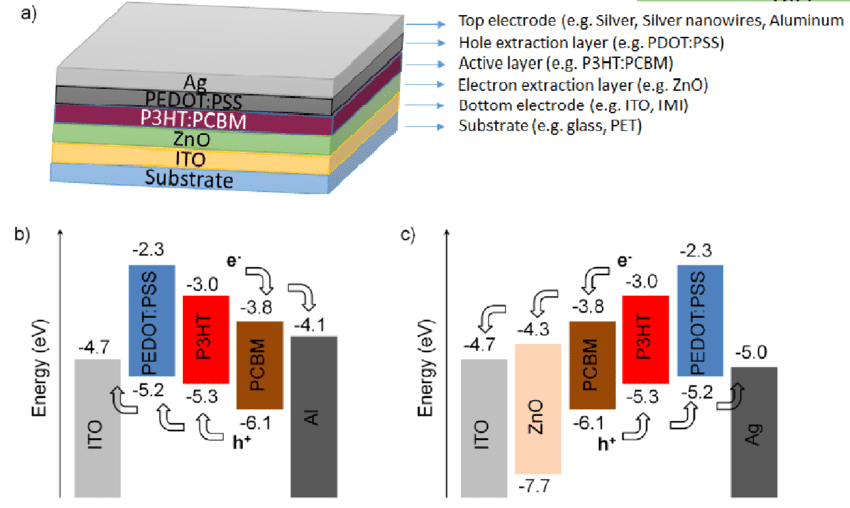Organic solar panels are photovoltaic panels of third generation. They can greatly increase the competitiveness of solar energy.
Structure and used materials
The operation principle is the same of photovoltaic cells from previous generations, explained in the first part about how solar panels work. Are used conjugated polymers ou organic molecules with short chain instead of silicon. The organic materials allow solar cells to be flexible. In all structures, 1 of the electrodes must be semitransparent, to allow entrance of light. One of the most used materials to semitransparent electrode is the indium tin oxide (ITO).

The cells need to have a substrate made of glass or polyethylene terephthalate (PET).


What are conjugated polymers?
Are polymers used in organic solar panels, have properties similar to metals and semiconductors. Have an alternate sequency of simple and double covalent connections along the chain.

Conjugated polymers are doped through oxidation or reduction reactions with ions or other organic molecules, to obtain lack or excess of electrons respectively.
Advantages and disadvantages of organic solar panels
In addition to flexibility, the organic solar panels have other advantages as:
- They are much lighter.
- Depending on material, can absorb infrared and/or infrared.
- The materials for fabrication are more abundant.
- Depend less on incident angle, allowing a higher number of potential applications.
While the disadvantages:
- The efficiency is still low, below 20%.
- The lifespan is lower than the inorganic panels.
This technology isn’t commercially available yet. The manufacturing process is different from inorganic solar panels and will be explained in another post.



